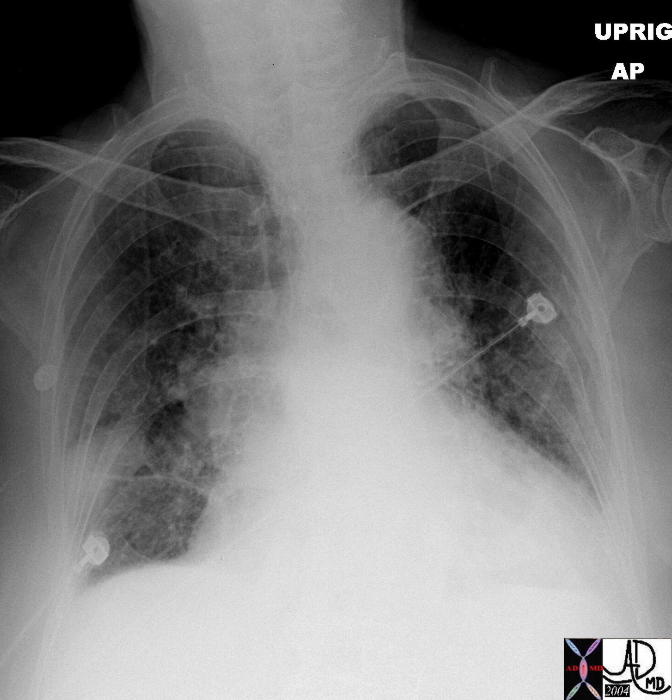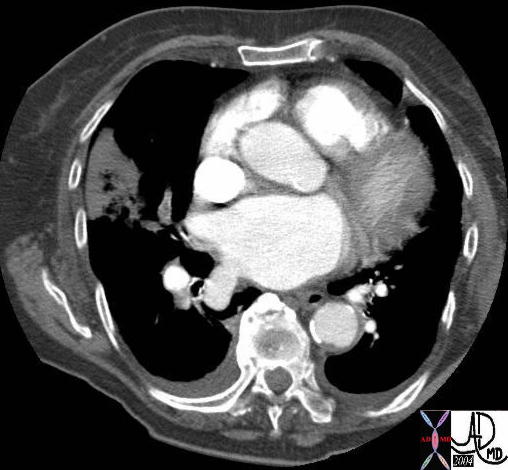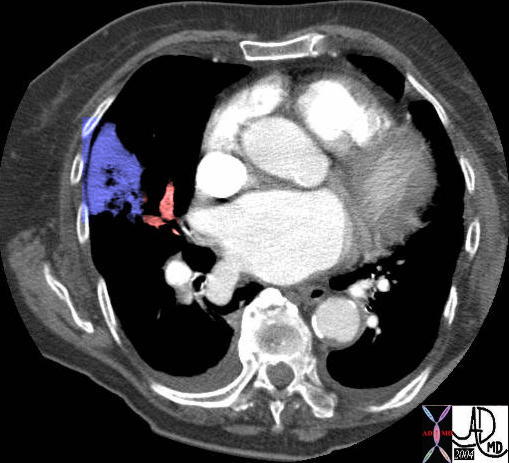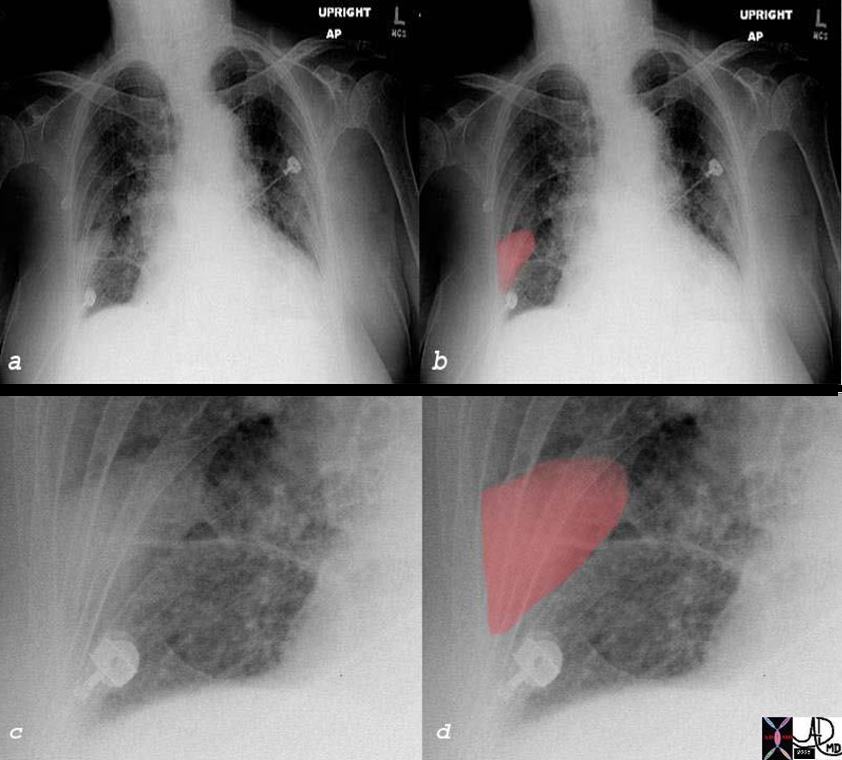A juxtapleural pulmonary soft tissue density in the form of a truncated cone with the base against the pleural surface on a chest x-ray, seen in pulmonary infarction.


39663a chest lung lower lobe peripheral wedge shaped defect infiltrate Hampton’s hump

|
Wedge Shaped Defect on CXR Hamptons Hump – Pleural Based Infarction |
| The plain film of a patient with right sided pleuritic pain and hypoxemia is shown. Image a shows a vague wedged shaped defect in the right lower lobe (overlaid in red in b), enlarged in c and d. This wedge shaped peripheral based defect is known as Hampton’s hump, and is suggestive of a pulmonary infarction, and subsequently proven as seen on the images below. When a pulmonary embolus causes an infarction, it may be seen as a wedged shaped defect on the CXR. Since the pulmonary circulation of the lung is an end arterial circulation, the most distal portion of the segment of the lung and its pleura will be affected. The accompanying inflammatory process will involve the pleura and pleuritic pain ensues.
39693c01b chest lung lower lobe peripheral wedge shaped defect infiltrate Hampton’s hump PE pulmonary embolus infarction heart cardiac enlarged failure chf circulatory vascular CXR chest X-ray plain film imaging radiology Courtesy Ashley Davidoff MD |
